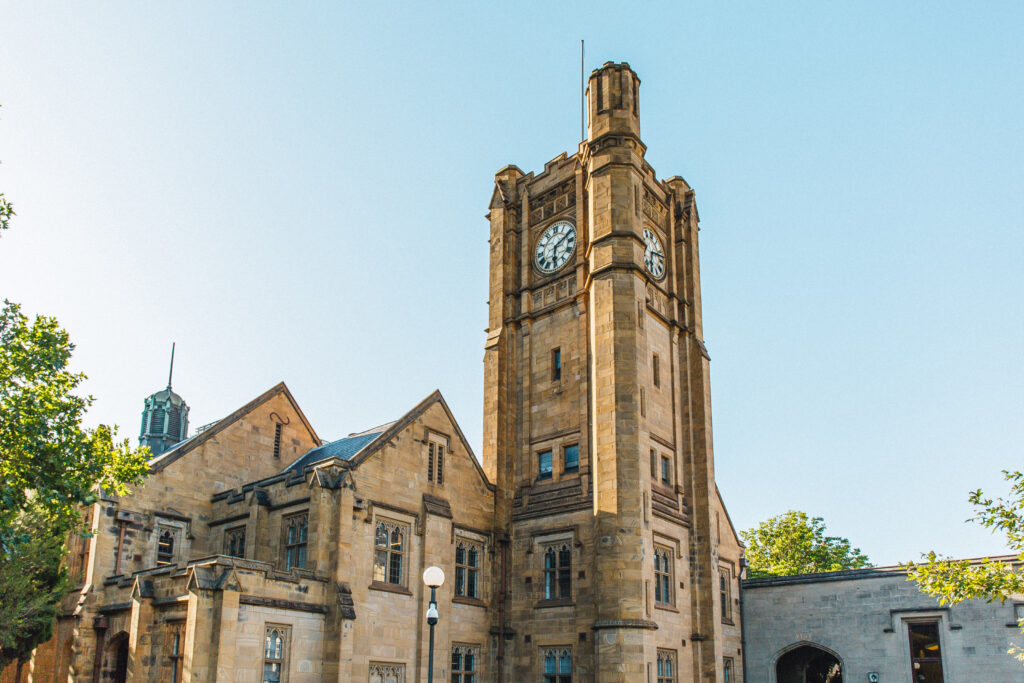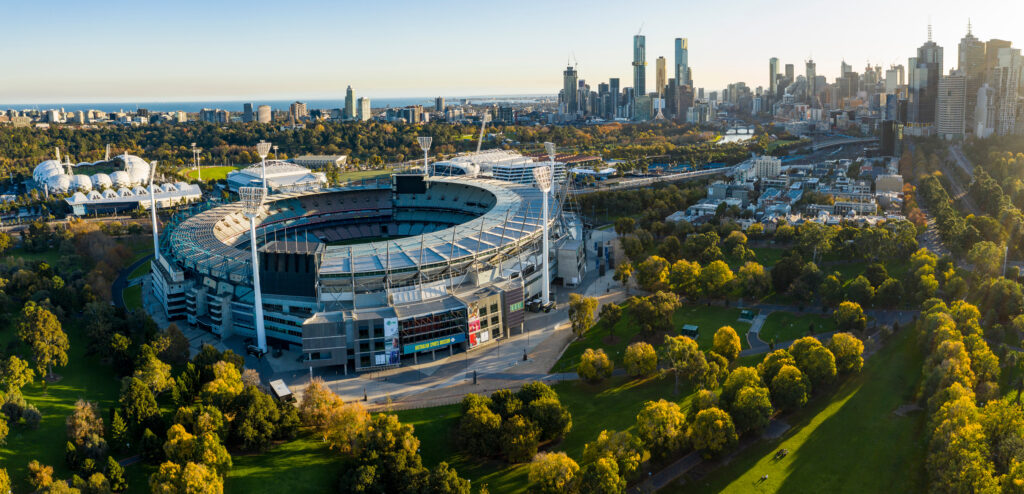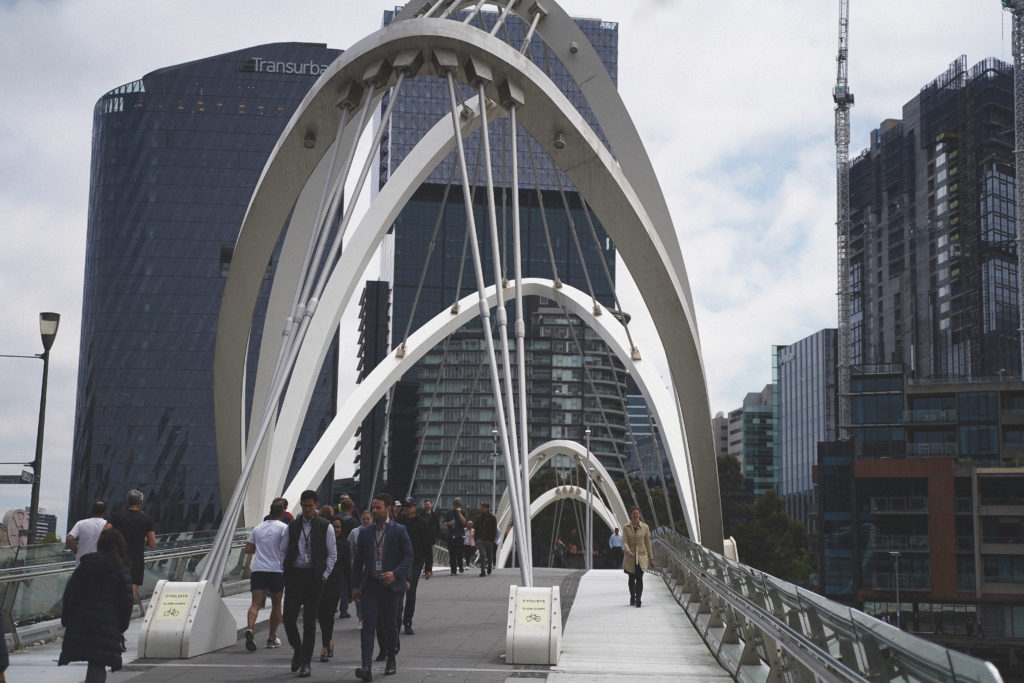The southern state of Victoria is home to many of Australia’s top universities. Seven universities and 34 campuses can be found in Melbourne, which was ranked the world’s most liveable city by the Economist Intelligence Unit in 2017. In fact, the city has consistently ranked in the Top 5 among the world’s Best Student Cities in the world, coming fourth in 2024.
But metropolitan Melbourne isn’t the only area of the state with first-rate universities. Regional Victoria also hosts several campuses as well as two of its own universities. To help you decide which institution suits you best, we’ve put together this guide to everything you need to know about universities in Victoria — including the latest in Quacquarelli Symonds (QS) global rankings.
University of Melbourne (UniMelb)
Established: 1853
Location: UniMelb has its main campus in Parkville, plus smaller campuses in Southbank, Burnley, Creswick, Dookie, Shepparton and Werribee.
Courses: UniMelb is particularly popular for courses across the arts and humanities, law and legal studies, anatomy and physiology, and engineering (mining and minerals).
Student population: There are over 52,000 students at UniMelb, of whom more than 20,000 are international students from over 150 countries.
Graduate success rate: UniMelb has a graduate employability rating of 98% and is ranked 8th in global employability by QS.
Notable alumni: Australian prime ministers Alfred Deakin, Robert Menzies, Harold Holt, and Julia Gillard, as well as Professor Ian H Frazer, who was the lead scientist in developing the Gardasil vaccine, comedian Ronny Chieng, and former Human Rights Commissioner, Professor Gillian Triggs.
Global rankings and awards: As of 2024, UniMelb is ranked 37th in the Times Higher Education World University Rankings, making it Australia’s top university according to THE. It belongs to the prestigious Group of Eight of Australia’s leading universities and came in at 14th in the QS Global Ranking 2024.
Fun fact: Melbourne’s oldest university was first established by a group of four professors and 16 students. Today, it has now grown to include numerous institutes, research centres and facilities with a strong academic reputation.
Monash University
Established: 1958
Location: Monash has its main campus in Clayton, plus smaller campuses in Caulfield, Parkville, Berwick, Malaysia, South Africa and the Monash Student Union (MONSU) Peninsula.
Courses: Monash ranks highly for courses in pharmacy and pharmacology, education and training, performance arts, nursing, anatomy and physiology and engineering.
Student population: Over 85,000, of whom around 29,000 are international students.
Graduate success rate: Monash has a graduate employability rating of 65% and is ranked 54th in global employability by QS as of 2022.
Notable alumni: former Australian treasurer Peter Costello, author Paul Jennings, cartoonist Michael Leunig, and singer Vance Joy.
Global rankings and awards: Monash is ranked 42nd in the QS Global Rankings 2024. It belongs to the prestigious Group of Eight and the Times Higher Education Top 1% (2018-2019). It was also ranked 21st in the Times Education World’s Most International Universities in 2017.
Fun fact: Monash has a huge international reach, including a major campus in Malaysia. This has allowed Monash to be a leader in research, with over 150 fields across its 10 faculties.
The Royal Melbourne Institute of Technology (RMIT)
Established: 1887, awarded university status in 1992.
Location: RMIT has its main campus in Melbourne City, smaller campuses in Brunswick and Bundoora, and two campuses in Vietnam.
Courses: RMIT is popular for art and design, architecture, information management and communication and media studies.
Student population: RMIT has a student population of over 90,000, including 28,000 international students, of whom 17,600 are taught offshore (with almost 14,000 at RMIT Vietnam).
Notable alumni: fashion designer Toni Maticevski, musician and songwriter Andrew Stockdale, photojournalist John Garrett, and film director and producer James Wan.
Graduate success rate: RMIT has a graduate employability rating of 86.9% and is ranked 77th in global employability by QS.
Global rankings and awards: RMIT is ranked 140th in the QS Global Rankings in 2024. It was also included in the QS Top 50 under 50 in 2021 and came in at 19th in the world for its art and design program.
Fun fact: RMIT was originally founded as a night school to train workers for the new jobs created by the industrial revolution in Australia in the late 1800s.
Swinburne University of Technology
Established: 1908, awarded university status in 1992.
Location: Swinburne has its main campus in Hawthorn, plus campuses in Croydon, Wantirna and Sarawak, Malaysia.
Courses: Swinburne is known for its courses in art and design, physics and astronomy, communication and media, engineering and computer science.
Student population: Swinburne has over 30,000 students, with around 33 per cent international students.
Notable alumni: author Graeme Base, journalist Mark Beretta, and director Gillian Armstrong.
Graduate success rate: Swinburne is ranked in the 301-500 range in global employability by QS.
Global rankings and awards: Swinburne is ranked 285th in the QS Global Rankings 2024, and was also recently included in the QS Top 50 under 50 in 2021.
Fun fact: As a young university with strong industry links, Swinburne’s programs are designed to meet industry needs. Swinburne provides special scholarships for women choosing to study for careers in STEM.
La Trobe University
Established: 1964
Location: La Trobe has its main campus in Bundoora, plus smaller campuses in Melbourne City, Bendigo, Albury-Wodonga, Mildura, Shepparton and Sydney.
Courses: La Trobe is popular for sports-related subjects, as well as archaeology, nursing, philosophy, sociology, and education and training.
Student population: La Trobe is home to just under 35,000 students, of whom around 4,600 are international students.
Global rankings and awards: La Trobe is ranked 242nd in the QS Global Rankings 2024, and was ranked 251-300th in the Times Higher Education World University Rankings in 2024.
Graduate success rate: La Trobe was ranked third in Victoria for graduate employability in 2023.
Notable alumni: Maureen Wheeler (co-founder of Lonely Planet), state politician Helen Buckingham, federal politician Sussan Ley, actress Pia Miranda, and Scott Pape, also known as the Barefoot Investor.
Fun fact: Australia’s only Pulitzer Prize-winning historian, the late Emeritus Professor Rhys Isaac, once worked at La Trobe.
Victoria University (VU)
Established: 1916, awarded university status in 1991.
Location: Footscray Park is the main VU campus, alongside Footscray Nicholson, VU at MetroWest, City Flinders, City Flinders Lane, City Queen, City King, St Albans, Sunshine, Werribee, VU Sydney and VU India.
Courses: VU is ranked highly for sports-related subjects, engineering (electrical), economics and econometrics, and computer science.
Student population: VU has over 40,000 students, of whom over 12,000 are international students.
Global rankings and awards: VU is ranked in the 401-500 range in the THE Ranking 2024. It was also ranked in the THE top 150 Young Universities 2023.
Graduate success rate: VU has consistently scored highly in the government-funded Employer Satisfaction Survey. VU is the first university in Australia to use a block teaching model, which emphasises job readiness as students are immersed in one subject at a time, in smaller classes.
Notable alumni: Dr Adrian Stoica (Senior Research Scientist for NASA), Andrew Gaze (former captain of the Australian Boomers basketball team), and Ms Deidre Anderson (President of Australia University Sport).
Fun fact: Thanks to its strengths in sports technology, Victoria has partnerships with major sports organisations throughout the state, as well as in Europe.
Australian Catholic University (ACU)
Established: 1991, after the amalgamation of four Catholic colleges in eastern Australia.
Location: In Melbourne, ACU has its campus in Fitzroy, alongside locations in Adelaide, Ballarat, Brisbane, Canberra, North Sydney, Strathfield and Rome.
Courses: ACU excels in subjects including nursing, education and training and psychology.
Student population: ACU has over 32,000 students, of whom 4,100 are international students enrolled from 103 countries.
Global rankings and awards: ACU is ranked 47th in the Times Higher Education Young Universities Rankings Top 50, and ranked 34th in QS World University Rankings by Subject in 2024 for Theology, Divinity and Religious Studies.
Graduate success rate: 94.1% of ACU graduates are employed within three years of graduating, making them 8th in Australia for graduate employability.
Notable alumni: founder of Nudie Juice James Ajaka, author Melina Marchetta, and Justin Madden, former AFL player and Victorian state minister.
Fun fact: ACU is one of the fastest-growing universities in Australia.
Deakin University
Established: 1974
Location: Deakin has most students at its Melbourne Burwood campus, followed by campuses in Geelong Waurn Ponds, Geelong Waterfront and Warrnambool.
Courses: Deakin is globally recognised for its sports-related subjects, along with education and training, theology, nursing, communications and media studies, and performing arts.
Student population: Deakin has just under 58,000 students, of whom just over 10,000 are international students from 132 countries. The top countries of origin for international students are India, China, Sri Lanka, Vietnam and Pakistan.
Global rankings and awards: Deakin is ranked 233rd in the QS Global Rankings 2024. It was also ranked 42nd in the THE Young Universities Rankings 2023.
Notable alumni: Bollywood director Anurag Singh, ABC journalist Emma Albirici, UNICEF CEO Carolyn Hardy, and Tony Ellwood, the director of the National Gallery of Victoria.
Graduate success rate: Deakin University surveyed recent graduates and found that 92% were in full-time employment, in diverse occupations across the world.
Fun fact: Deakin was Australia’s first university to offer distance education.
Federation University (Fed Uni)
Established: 1870, awarded university status in 1994. It was known as the University of Ballarat until 2014.
Location: Fed Uni has its main campus in Ballarat, as well as smaller campuses in Ararat, Horsham, Stawell, Churchill and Berwick.
Courses: Fed Uni is recognised for its humanities and social sciences subjects, as well as education, nursing, health sciences and engineering.
Student population: There are over 18,000 students enrolled at Fed Uni.
Global rankings and awards: Fed Uni is ranked 1st in Victoria for graduate starting salary and in the top 200 in the THE Young Universities Ranking 2023.
Graduate success rate: According to the Good Universities Guide, 72.4% of Federation University Australia graduates are employed full-time four months after completing their course. It also has the highest overall employment rating (92%) of any Victorian-based university, according to the QILT survey.
Notable alumni: former Victorian premier Steve Bracks, Dr Cyril P Callister (the inventor of Vegemite), and Antarctic explorer and physicist Richard W Richards.
Fun fact: Federation University has partnerships with Chinese tertiary institutions such as Hebei University of Science and Technology and Shenzhen Polytechnic for joint programs in IT, civil engineering and business.




